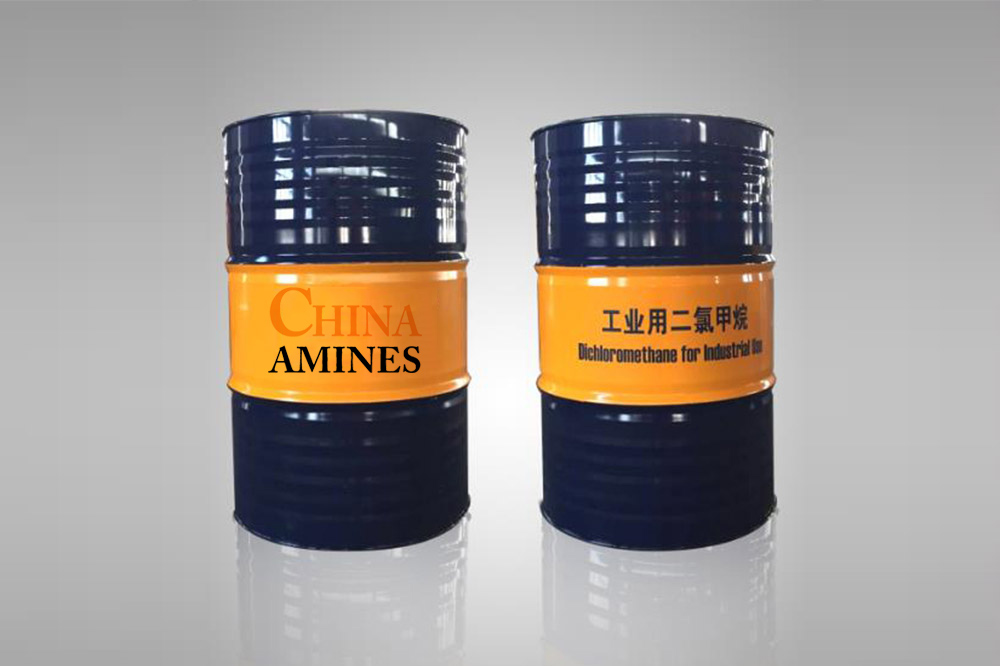Your Questions and Comments
Your sales and customer service desk partners within China Amines Co will continue to serve you. You can also contact us via our headquarter office-
Email:info@chinaamines.com
China Amines Co
Product Profile
1. Chemical Structure and Properties
Molecular Formula:
C₃H₇NO
Structural Formula:
HCON(CH₃)₂
A polar aprotic solvent with a formamide core and two methyl groups attached to the nitrogen atom.
Physical Properties:
- Appearance: Clear, colorless liquid with a faint amine-like odor.
- Boiling Point: 153°C; Density: 0.94 g/cm³; Vapor Pressure: 3.7 mmHg at 25°C.
- Solubility: Miscible with water, alcohols, ethers, and most organic solvents.
Chemical Properties:
- High Polarity: Dipole moment of 3.8 D, enabling dissolution of polar and nonpolar compounds.
- Thermal Stability: Decomposes above 350°C, releasing CO, NOₓ, and methylamines.
- Reactivity: Acts as a catalyst in reactions like Vilsmeier–Haack formylation and Ullmann couplings.
2. Industrial Applications
Polymer Production:
- Solvent for polyurethane (PU) and polyacrylonitrile (PAN) production.
- Example: Dissolves PU precursors for synthetic leather manufacturing (e.g., Clarino® fabrics).
Pharmaceuticals:
- Reaction Medium: Key solvent for peptide synthesis, antibiotic production, and anticancer drugs.
Electronics:
- Photoresist Stripper: Removes resist layers in semiconductor fabrication.
Agrochemicals:
- Solvent for pesticides and herbicide formulations.
Petrochemicals:
- Extractive distillation agent for separating acetylene from hydrocarbon mixtures.
3. Safety and Toxicology
Health Hazards:
- Hepatotoxicity: Linked to elevated liver enzymes and fibrosis.
- Reproductive Toxicity: Potential teratogenic effects (H360D).
- Inhalation (≥10 ppm): Respiratory irritation, headache, nausea.
- Skin Contact: Penetrates gloves; causes hepatotoxicity and reproductive harm.
- Ingestion: Highly toxic; damages liver and kidneys.
Fire & Explosion:
Combustible liquid (flash point: 58°C); forms explosive peroxides upon storage.
Protection Measures:
- PPE: Silver Shield® gloves, full-face respirators with organic vapor cartridges.
- Storage: Inert gas blanket to prevent peroxide formation.
4. Environmental & Regulatory Compliance
Environmental Impact:
- Aquatic Toxicity: LC50 (fish): 1,000–5,000 mg/L; EC50 (daphnia): 500 mg/L.
- Biodegradability: Slow (40% in 28 days); persistent anaerobically.
- Atmospheric Fate: Reacts with hydroxyl radicals (half-life ~5 days).
Regulatory Frameworks:
- GB 13690-2009: Class 3.3 Flammable, Hazardous Chemical.
- OSHA PEL: 10 ppm (skin); EPA TRI-listed.
- CLP: Repro. Tox. 1B, Acute Tox. 4, Skin Irrit. 2.
- REACH: Restricted; requires industrial authorization.
Transport:
UN 2265; Class 3 Flammable Liquid, Packing Group III.
5. Case Studies & Insights
Case 1: Polyurethane Synthetic Leather
Process: DMF dissolves PU resins for textile coatings (e.g., Clarino®).
Efficiency: 95% recovery via distillation; 80% emission reduction.
Case 2: Semiconductor Photoresist Stripping
Application: DMF-based strippers for EUV resist removal in 3nm fabrication.
Performance: 99.9% residue removal without substrate damage.
Comparative Analysis:
- Pros: High solvency for polar polymers.
- Cons: DMAc less toxic but 30% higher cost.


